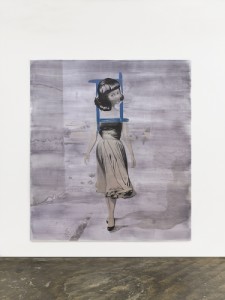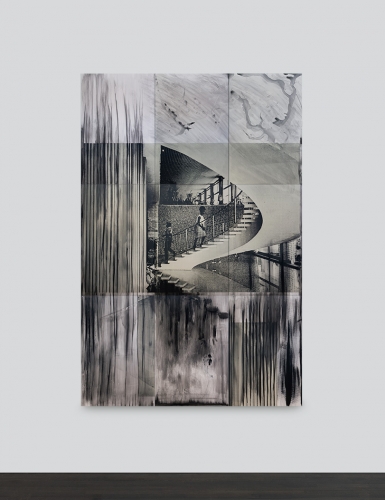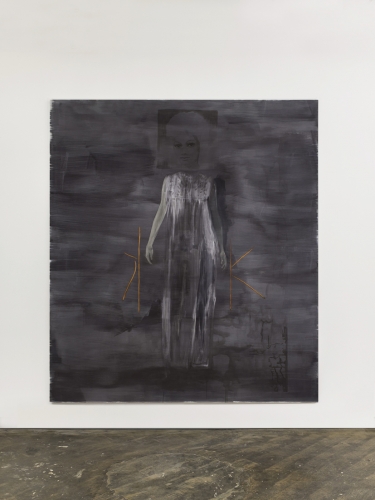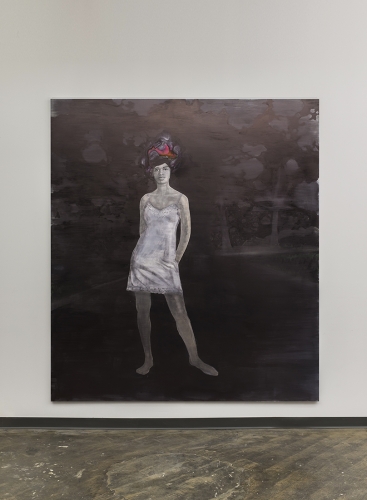
Lorna Simpson: recent works
Right back at you, 2015.
Statements:
I just finished this piece titled Moveableness, and in many ways, it embodies both my conceptual interests and my process as an artist. It’s based on an image that I found in an Ebony magazine from the sixties, the original image depicting a modernist interior and a woman ascending a staircase. There’s something in that image I found mesmerizing, not only in the architectural details but also in her stride.
As a next step, that image was sent to a man I work with to do my silk screening. In the case of Moveableness, the image transfer was done over several panels. With the image broken up, I was free to play with the arrangement of the individual panels, manipulating them to foreclose, showing the original in its totality. That notion of fragmentation, especially of the body, is prevalent in our culture, and it’s reflected in my works. We’re fragmented not only in terms of how society regulates our bodies but in the way we think about ourselves.
Moveableness, 2015.
Also, too, photographs—taken by me or sourced from found imagery—have played an integral role in my practice as an artist, as is the case with Moveableness. My collages combine images of heads belonging to black women with the addition of ink washes to illustrate their hair. I can trace my original interest in found images to a discovery I made of these old Ebony magazines belonging to my grandmother. I found them really satisfying to look at, because they’re so contextual—from a particular time and for a particular audience. From there, I started collecting tons of Ebony and Jet magazines and other, similarly themed printed matter, ranging from the late 1930s through till the late 1970s. For me, the images hearken back to my childhood, but are also a lens through which to see the past fifty years in American history.
Nightmare? , 2015.
Seated, 2015.
Slip, 2015.
But what’s just as important as the photographic components are the more tactile, immediate elements, such as the inks I use. With ink, there’s a free-form, spontaneous quality to it that complements the more methodical process that is involved in the selection and placement of the photographic or found image. Working with ink is very much about being in the moment, and as a result there’s a degree of subconsciousness that comes through. It’s not the kind of process where you can go, Okay, that side’s going to be red, and it’s going to look like this. It has a very immediate, in-the-moment kind of flow to it. It requires you to make split-second decisions in the way you handle ink or the way ink flows on any given surface—that’s always surprising to me. (quotes from article of Joseph Akel in Paris Review, October 15, 2015)




